No products in the cart.
Artist of History: Leonardo da Vinci – The Renaissance Genius
Leonardo da Vinci, often described as the true Renaissance man, was more than just a painter and sculptor—he was an artist-scientist, engineer, inventor, and anatomical researcher. His fascination with the human body, natural world, and mechanics made him one of the most influential figures in history. His anatomical studies, visionary flying machines, and mastery of perspective in paintings and sculptures continue to captivate audiences centuries later.
One of his most famous works, the Mona Lisa, housed in the Louvre Paris, remains one of the most recognised paintings in the world. Its lifelike detail, subtle use of shadow, and mysterious expression have intrigued historians and art lovers alike. But beyond this masterpiece, da Vinci’s notebooks reveal a mind far ahead of its time. These notes contain anatomical drawings, early sketches of flying machines, and architectural concepts that foreshadowed scientific advancements centuries before they became reality.
This blog will explore da Vinci’s artistic achievements, his scientific innovations, and his lasting influence on generations of artists. From his early training under Andrea del Verrocchio to his final years at Clos Lucé, we will examine how Leonardo shaped both art and science, leaving behind a legacy that still inspires today.
For a deeper look into Leonardo’s notebooks and scientific research, visit the British Library’s collection of his manuscripts.
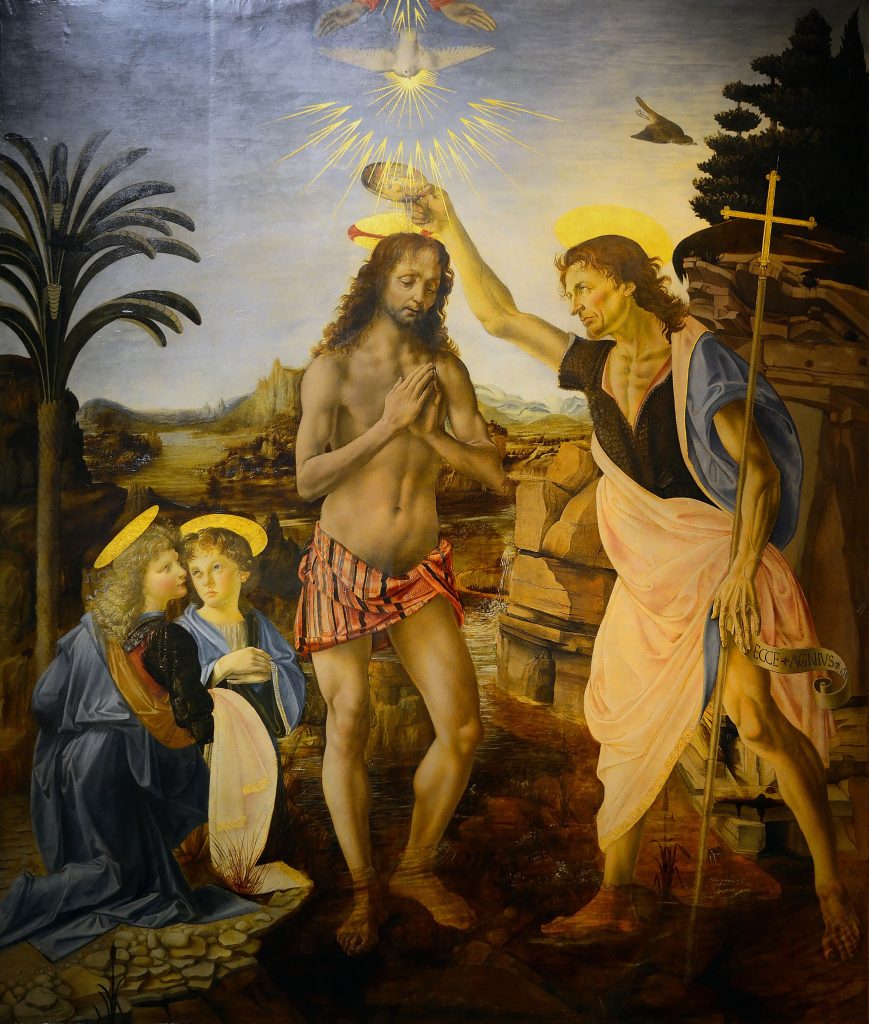
Early Life and Artistic Beginnings
Born on 15 April 1452 in the town of Vinci, Leonardo was the illegitimate son of Ser Piero, a prominent notary, and a peasant woman. Though he did not receive a formal academic education, he showed an early talent for drawing and a deep curiosity about the world around him. His early sketches captured his observations of nature, human anatomy, and mechanical structures—interests that would define his later works.
Apprenticeship with Andrea del Verrocchio
At around 14 years old, Leonardo moved to Florence and became an apprentice in the workshop of Andrea del Verrocchio, one of the most respected artists of the time. Here, he learned painting, sculpting, metalworking, and engineering, gaining exposure to a wide range of artistic techniques. Verrocchio was known for his mastery of perspective and anatomy, and under his guidance, Leonardo developed skills that set him apart from other artists of his generation.
One of Leonardo’s earliest contributions can be seen in The Baptism of Christ, a painting completed in Verrocchio’s studio. It is believed that Leonardo painted the angel on the left side of the composition, which exhibits a softness and depth that surpasses the rest of the painting. Some accounts claim that after seeing Leonardo’s work, Verrocchio declared he would never paint again, recognising that his pupil had surpassed him.
You can explore The Baptism of Christ and learn more about Andrea del Verrocchio’s influence on Leonardo at the National Gallery’s online archive.
The Rise of a Visionary Artist
Even in his early years, Leonardo’s approach to art was different from his peers. He studied human anatomy in detail, dissecting cadavers to understand the structure of muscles, bones, and organs. This knowledge allowed him to create figures with realistic movement and proportions, a skill that became evident in later masterpieces like Virgin of the Rocks and The Last Supper.
Leonardo’s interest in the natural world extended beyond painting. He meticulously recorded his studies of light, water flow, and aerodynamics. His sketches of flying machines, inspired by the flight of birds, were among the earliest conceptualisations of human aviation. Many of these drawings, including the famous Vitruvian Man, can be explored through the online collections of the Royal Collection Trust.
By the 1470s, Leonardo had begun receiving independent commissions, gaining recognition for his innovative techniques. His paintings showcased his growing understanding of light, shadow, and perspective, setting the foundation for what would become the hallmark of Renaissance art. He was not just a painter but a thinker who combined science and creativity, paving the way for future artists and inventors.
To learn more about Leonardo’s contributions to both art and science, visit the Museo Leonardo da Vinci in Milan.
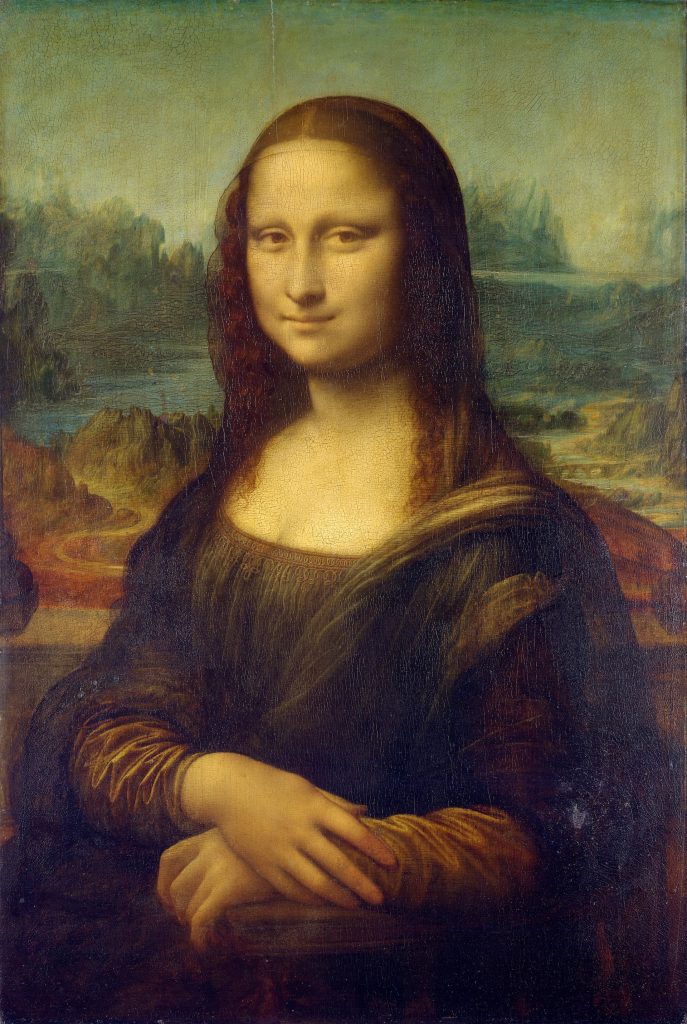
Leonardo da Vinci: The Painter and Sculptor
Leonardo da Vinci’s ability to merge artistic skill with scientific precision made him one of the most innovative painters of the Renaissance. His works are celebrated for their lifelike detail, use of perspective, and emotional depth. Though relatively few of his paintings survive, each one demonstrates groundbreaking techniques that transformed the way artists approached composition, light, and anatomy.
Mona Lisa & The Mystery Behind Her Smile
The Mona Lisa is one of the most recognisable paintings in history, drawing millions of visitors to the Louvre Paris every year. Unlike traditional portraiture of the time, Leonardo’s subject is positioned in a relaxed, three-quarter pose, with a soft expression that seems to change depending on the angle from which it is viewed.
Leonardo achieved this effect through sfumato, a technique he pioneered, which involves the subtle blending of colors and tones to create a natural transition between light and shadow. This technique enhances the lifelike quality of the Mona Lisa, giving her an almost ethereal presence. The landscape in the background, with winding paths and misty mountains, adds to the painting’s sense of mystery.
The identity of the Mona Lisa has been widely debated. Many historians believe she was Lisa Gherardini, the wife of a wealthy Florentine merchant, but some theories suggest the painting could be an idealised version of Leonardo himself. Regardless of its origins, the Mona Lisa remains a masterpiece of Renaissance portraiture, showcasing Leonardo’s deep understanding of human expression and natural forms.
To explore more details about the Mona Lisa, visit the Louvre’s official page:

Virgin of the Rocks: A New Approach to Religious Art
Virgin of the Rocks is a prime example of Leonardo’s ability to create depth and emotion in religious painting. Unlike traditional depictions of the Virgin and Child, which often placed them in structured, symmetrical compositions, Leonardo set the scene in a dramatic rocky grotto, blending figures seamlessly into the natural environment.
Leonardo painted two versions of Virgin of the Rocks. One is housed in the National Gallery, London, while the other is in the Louvre Paris. Both versions highlight Leonardo’s expertise in sfumato, atmospheric perspective, and anatomical precision. The positioning of the figures, with their gentle gestures and flowing robes, creates a sense of movement and realism that was rarely seen in earlier religious paintings.
The careful balance of light and shadow, combined with Leonardo’s deep study of human anatomy, brings a lifelike presence to the figures. His composition also demonstrates an advanced understanding of geometry, with the figures arranged in a triangular formation that subtly guides the viewer’s gaze across the scene.
You can explore the London version of Virgin of the Rocks at the National Gallery.

The Last Supper: A Masterpiece of Composition and Emotion
One of Leonardo’s most ambitious works, The Last Supper, is located in Santa Maria delle Grazie in Milan. Unlike traditional frescoes, which were painted onto wet plaster, Leonardo experimented with a dry technique that allowed for finer detail. However, this method made the painting highly vulnerable to deterioration, requiring extensive restoration efforts over the centuries.
The painting captures the moment Jesus reveals that one of his disciples will betray him. Leonardo’s ability to depict raw human emotion is evident in the varied reactions of the disciples—some appear shocked, others distressed, while Judas remains withdrawn, clutching a small bag symbolising his betrayal.
Leonardo’s use of perspective in The Last Supper is particularly groundbreaking. The lines of the ceiling and walls converge at a single vanishing point just behind Jesus, reinforcing his central role in the composition. This mastery of depth and spatial arrangement was revolutionary for the time and influenced countless artists in the years that followed.
Due to its fragile state, access to The Last Supper is limited, and visits must be booked in advance. For more information and virtual access, visit: https://cenacolovinciano.org/en/
Leonardo’s artistic achievements were defined by his ability to push boundaries, experimenting with new techniques to achieve greater realism and emotional depth. His legacy as both a painter and innovator continues to shape the art world today.
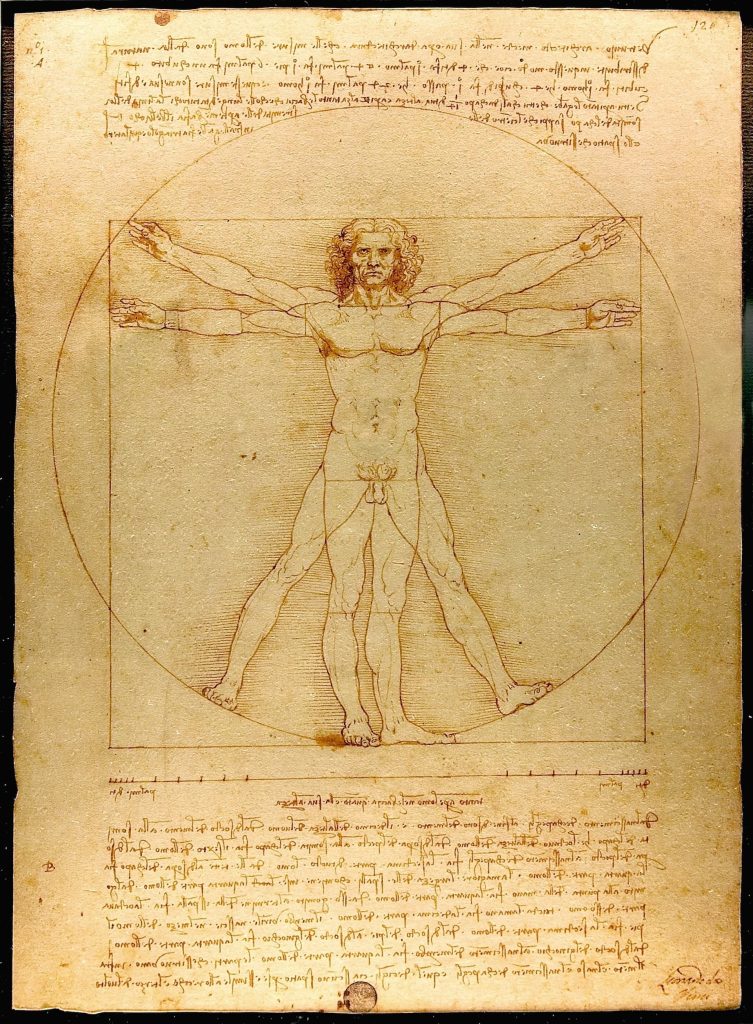
Leonardo’s Groundbreaking Scientific and Anatomical Studies
Leonardo da Vinci’s fascination with the human body and natural sciences was just as significant as his artistic achievements. His meticulous anatomical studies, engineering designs, and scientific observations placed him far ahead of his time. His approach combined careful observation with artistic precision, leading to some of the most detailed anatomical drawings in history.
A Master of Human Anatomy
Leonardo’s anatomical studies were groundbreaking for their accuracy and depth. He conducted dissections of human corpses to better understand muscle structure, organ placement, and bodily functions. His drawings, numbering over 240, illustrate the mechanics of movement, the inner workings of the heart, and the complexity of the nervous system.
Unlike many of his contemporaries, who relied on secondhand knowledge, Leonardo preferred firsthand observation. His detailed sketches of the skeletal system, muscle groups, and internal organs were accompanied by extensive notes, many of which anticipated later medical discoveries. His studies of the heart, for example, correctly identified the function of the aortic valve centuries before modern science confirmed it.
His anatomical drawings can be explored in depth at the British Library.
The Vitruvian Man
One of Leonardo’s most famous drawings, the Vitruvian Man, represents his exploration of human proportions. Inspired by the writings of the Roman architect Vitruvius, the drawing illustrates a man positioned inside both a square and a circle, demonstrating how human anatomy aligns with mathematical precision.
This study was part of Leonardo’s belief that art and science were interconnected. He saw the human body as a microcosm of the universe, where balance and proportion were fundamental principles. The drawing remains one of the most recognizable symbols of the Renaissance and continues to be used to illustrate the harmony between art, science, and nature.
Leonardo’s Notebooks
Leonardo kept extensive notebooks filled with sketches and observations on a wide range of subjects, from anatomy to engineering and botany to aerodynamics. His notes, written in mirror script, were not widely studied until centuries after his death. They contain early concepts for everything from flying machines to hydraulic systems, many of which anticipated technological advancements by hundreds of years.
His curiosity extended beyond human anatomy; he also studied animal physiology, plant growth, and geological formations. His observations on water flow, for example, contributed to later understandings of fluid dynamics.
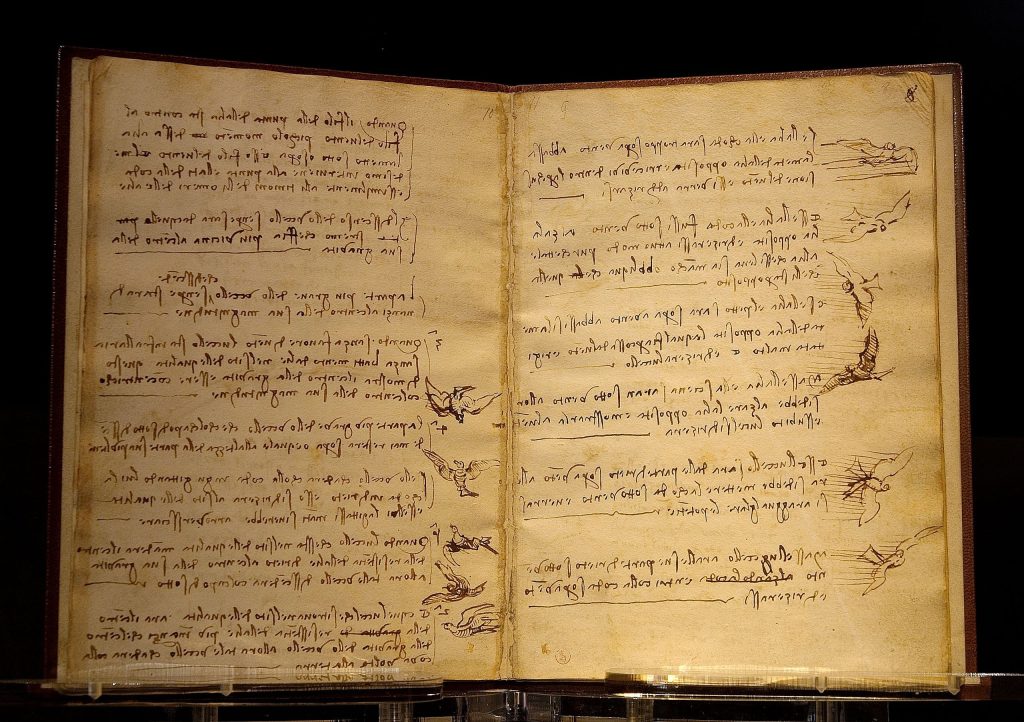
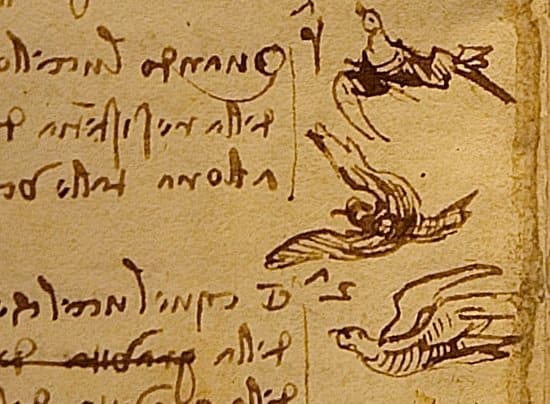

Da Vinci’s Engineering and Inventions
Leonardo da Vinci was not just an artist and scientist—he was also an inventor whose designs laid the foundation for modern engineering. His sketches depict ideas for flying machines, military weapons, and advanced city planning that were far ahead of his time. While many of his inventions were never built during his lifetime, his engineering insights influenced later developments in various fields.
The Flying Machine
Leonardo was captivated by the possibility of human flight. Studying the anatomy of birds and bats, he sketched several designs for flying machines, including an ornithopter—a winged contraption intended to mimic the movement of bird wings. Though his designs were never constructed, they reflected an early understanding of aerodynamics and inspired later aviation pioneers.
One of his most famous sketches, often referred to as the aerial screw, resembles a modern helicopter. While the technology of his time was not advanced enough to bring his ideas to life, his vision demonstrated an intuitive grasp of physics that predated modern flight by centuries.
Military Engineering
Leonardo’s services were often sought by rulers for military innovations. He designed an armored tank powered by cranks and gears, featuring a 360-degree firing capability—essentially a blueprint for modern armored vehicles. He also conceptualized multi-barreled cannons, portable bridges, and underwater breathing devices for naval warfare.
Despite designing weapons, Leonardo was known to be a pacifist, and many historians believe he sketched war machines more as intellectual exercises than for actual use in battle. His military designs, however, show a deep understanding of mechanics and physics, reinforcing his reputation as an unparalleled thinker.
Hydraulics & City Planning
Beyond military applications, Leonardo also had a visionary approach to civil engineering and urban planning. He conceptualized self-sustaining cities with efficient waste disposal systems, wide streets to prevent congestion, and underground canals for irrigation and water supply. His ideas were centuries ahead of their time, reflecting concerns about public health, infrastructure, and sustainability that remain relevant today.
He also studied the movement of water and designed advanced irrigation systems. His work on hydraulics laid the groundwork for modern water management techniques used in agriculture and urban development.
To explore models and replicas of Leonardo’s inventions, visit the Museo Leonardo da Vinci.
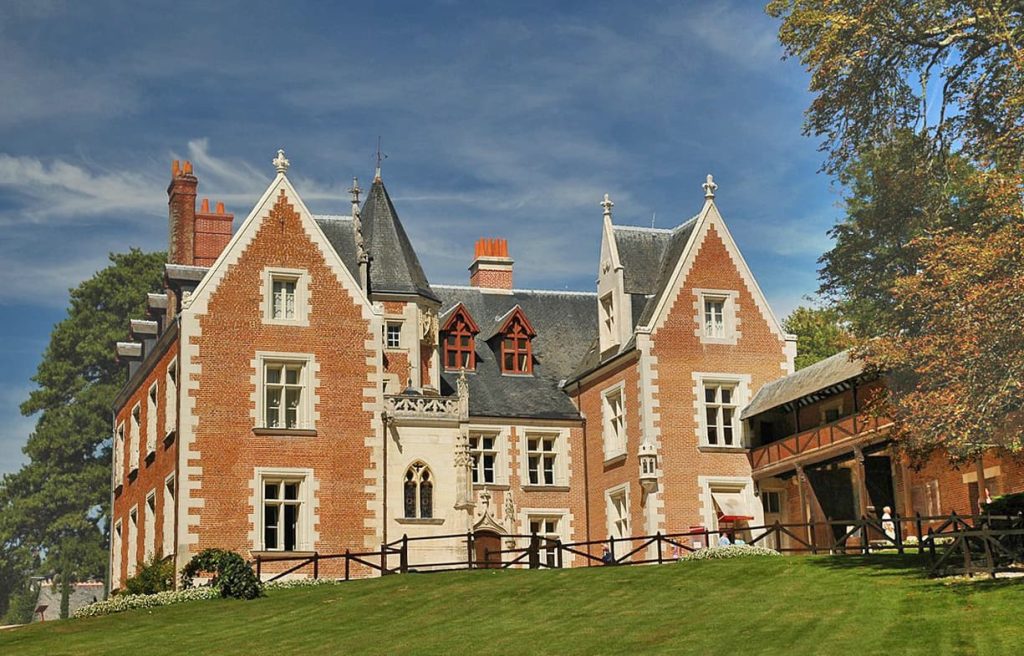
Leonardo’s Final Years and Legacy
Leonardo da Vinci’s final years were marked by reflection, continued artistic exploration, and a deep engagement with science and engineering. Despite advancing age, his passion for discovery remained undiminished, and he spent his later years refining his studies and working on ambitious projects for European nobility.
Return to Florence and France
After years of working in Milan and Rome, Leonardo returned to Florence before accepting an invitation from King Francis I of France. In 1516, he moved to Clos Lucé, a manor near the king’s château in Amboise. There, he was given the honorary title of Premier Painter, Engineer, and Architect of the King, allowing him the freedom to pursue his intellectual and artistic endeavors without financial concerns.
At Clos Lucé, Leonardo continued working on architectural designs, mechanical inventions, and studies on hydraulics and anatomy. He also brought with him several unfinished works, including the Mona Lisa, which he continued refining until his death. The king, an admirer of Leonardo’s genius, frequently visited him, and their discussions are said to have influenced French art and culture significantly.
Leonardo spent his final years at Clos Lucé, where he passed away on May 2, 1519, at the age of 67. His remains were buried at the Chapel of Saint-Hubert in Château d’Amboise.
To learn more about Leonardo’s final home and the projects he worked on in France, visit Clos Lucé.

Impact on Generations of Artists
Leonardo’s influence extended far beyond his own lifetime. His innovative techniques in sfumato, perspective, and anatomical accuracy inspired some of the greatest artists of the Renaissance, including Michelangelo and Raphael.
- Michelangelo: While Leonardo focused on blending tones and creating soft transitions, Michelangelo took a more sculptural approach to painting, emphasizing dramatic poses and anatomical precision.
- Raphael: Known for his harmonious compositions, Raphael adopted many of Leonardo’s techniques, particularly in rendering lifelike figures and balanced spatial arrangements.
Leonardo’s notebooks, which contained detailed observations on art, science, and engineering, became essential references for later generations of artists and scholars. His ability to seamlessly combine artistic creativity with scientific inquiry set the foundation for interdisciplinary studies that continue to thrive today.
The Timeless Renaissance Man
Even centuries after his death, Leonardo da Vinci remains one of the most revered figures in history. His work embodies the ideal of the Renaissance man—a person whose curiosity and talents span multiple disciplines. His contributions to anatomy, physics, aerodynamics, hydrodynamics, and engineering are as remarkable as his artistic masterpieces.
Leonardo’s influence extends into modern fields of medicine, aviation, robotics, and artificial intelligence, where his forward-thinking ideas continue to inspire new generations of scientists and engineers.
Recap of Leonardo’s Genius
From his masterpieces in painting to his pioneering scientific studies, Leonardo da Vinci was an unparalleled thinker and creator. His innovative approach to anatomy, optics, and mechanical design transformed both the art world and scientific thought. Whether through his paintings, sculptures, or inventions, his work continues to be studied and admired by historians, artists, and engineers alike.
Why He Still Matters
Leonardo da Vinci represents the limitless potential of human creativity and intellectual curiosity. His ability to blend art and science, drawing inspiration from the natural world and the mechanics of the human body, remains a model for interdisciplinary study. His work encourages us to think beyond boundaries, question the world around us, and seek knowledge in all its forms.
Leonardo’s legacy lives on in museums, galleries, and online collections around the world. To truly appreciate his genius, consider:
- Visiting the Louvre Paris to see the Mona Lisa in person.
- Exploring his scientific manuscripts at the British Library.
- Learning about his inventions at the Museo Leonardo da Vinci in Milan.
- Visiting Clos Lucé, where he spent his final years.
- Studying his religious works, including The Last Supper, at Santa Maria delle Grazie.
For more information on Leonardo’s works and contributions, visit the Vatican Museums, where several of his drawings and paintings are housed: https://www.museivaticani.va/
Leonardo da Vinci’s brilliance continues to inspire and shape our understanding of the world. His works remind us of the power of imagination, curiosity, and the pursuit of knowledge—values that are just as relevant today as they were during the Renaissance.


Leave a Reply